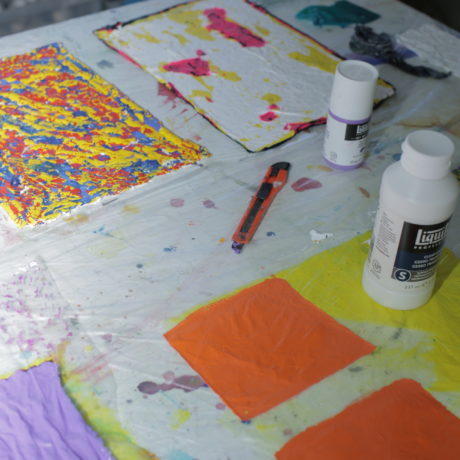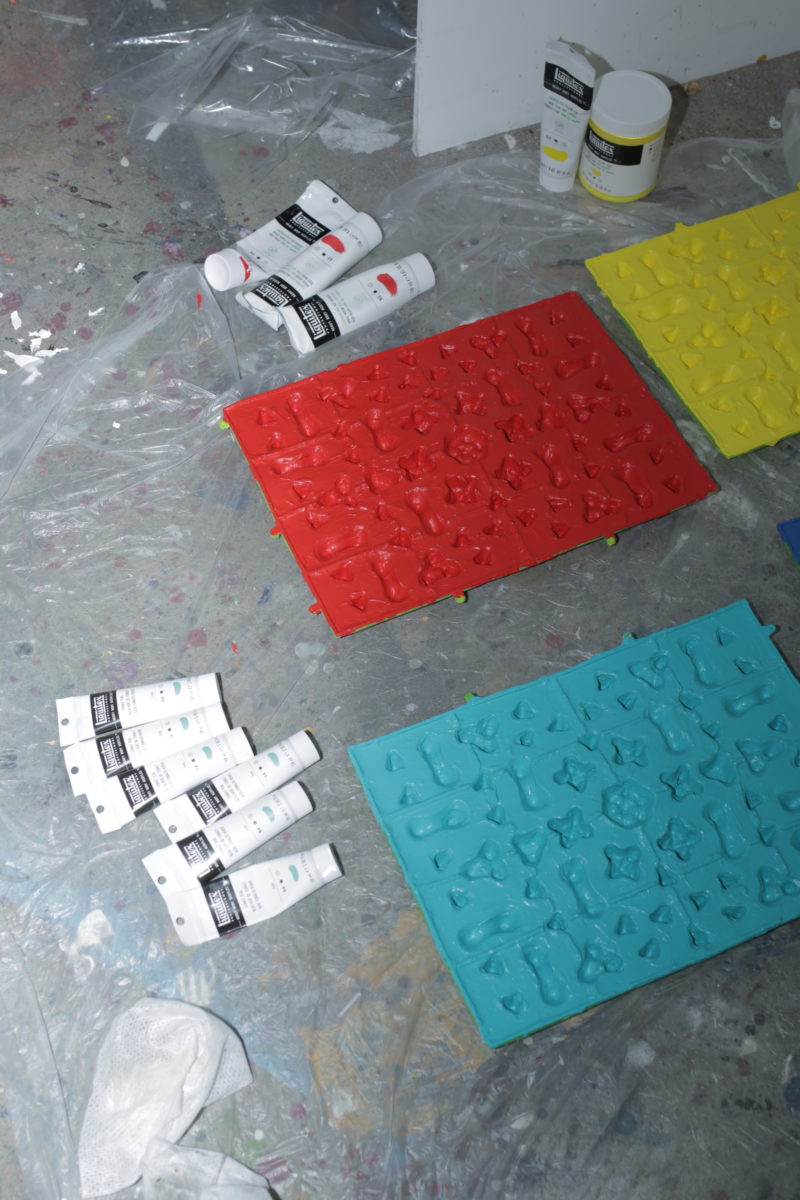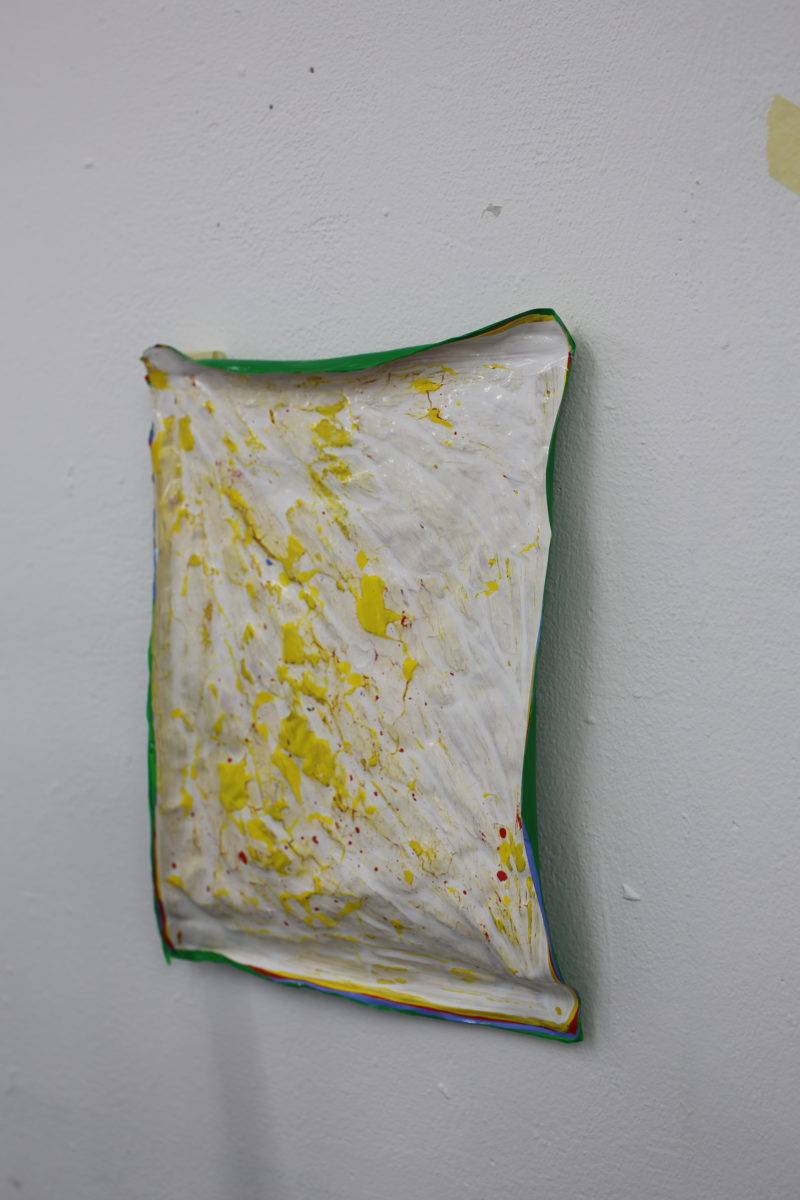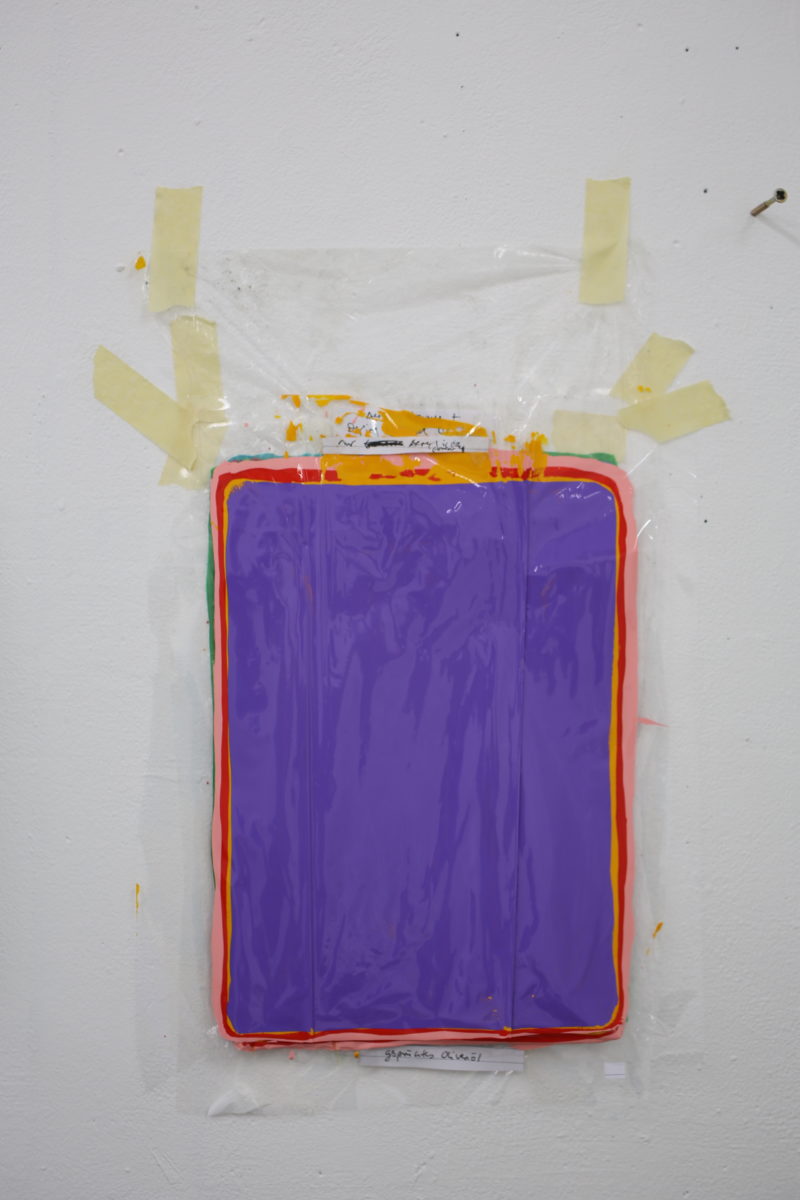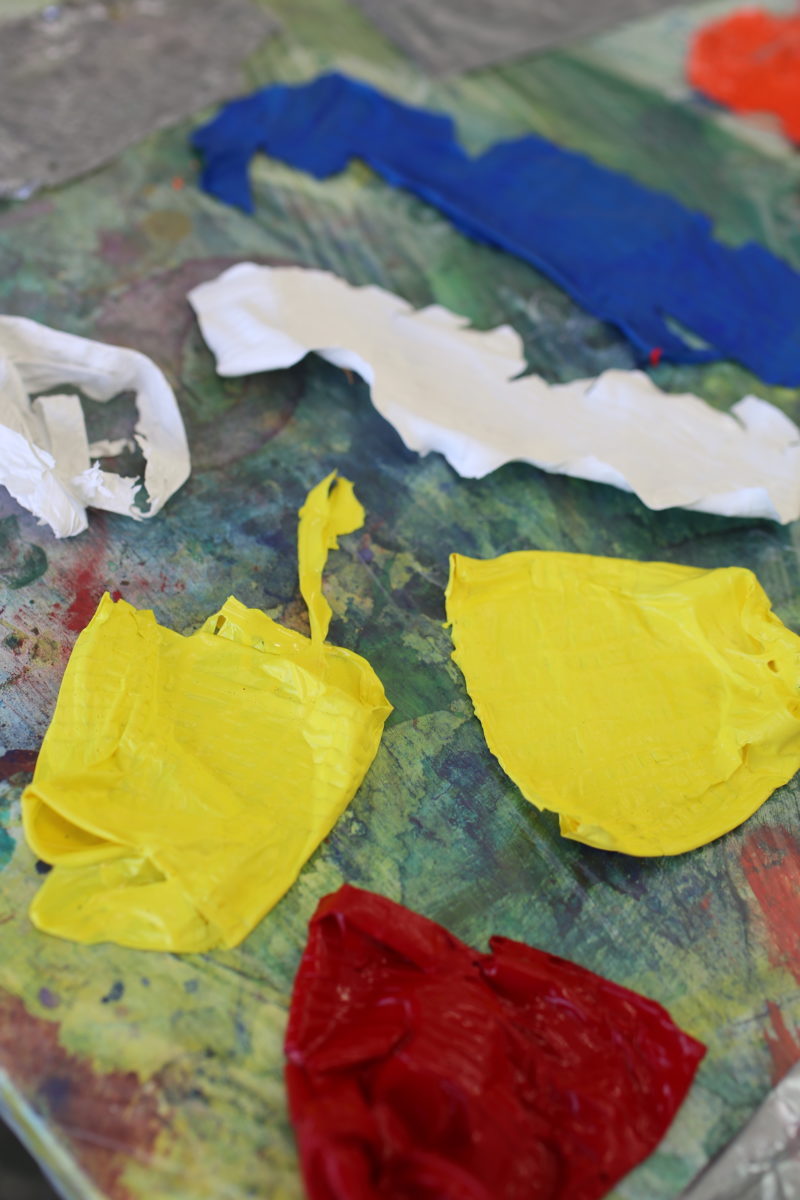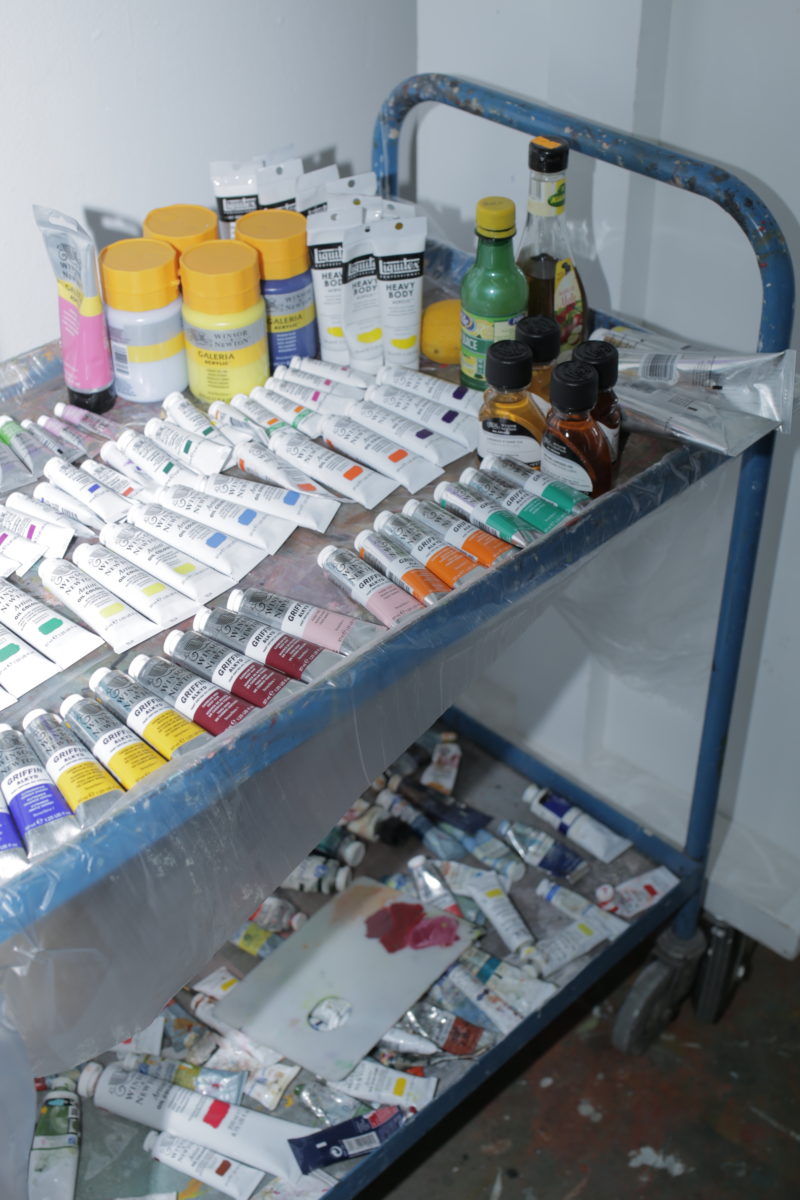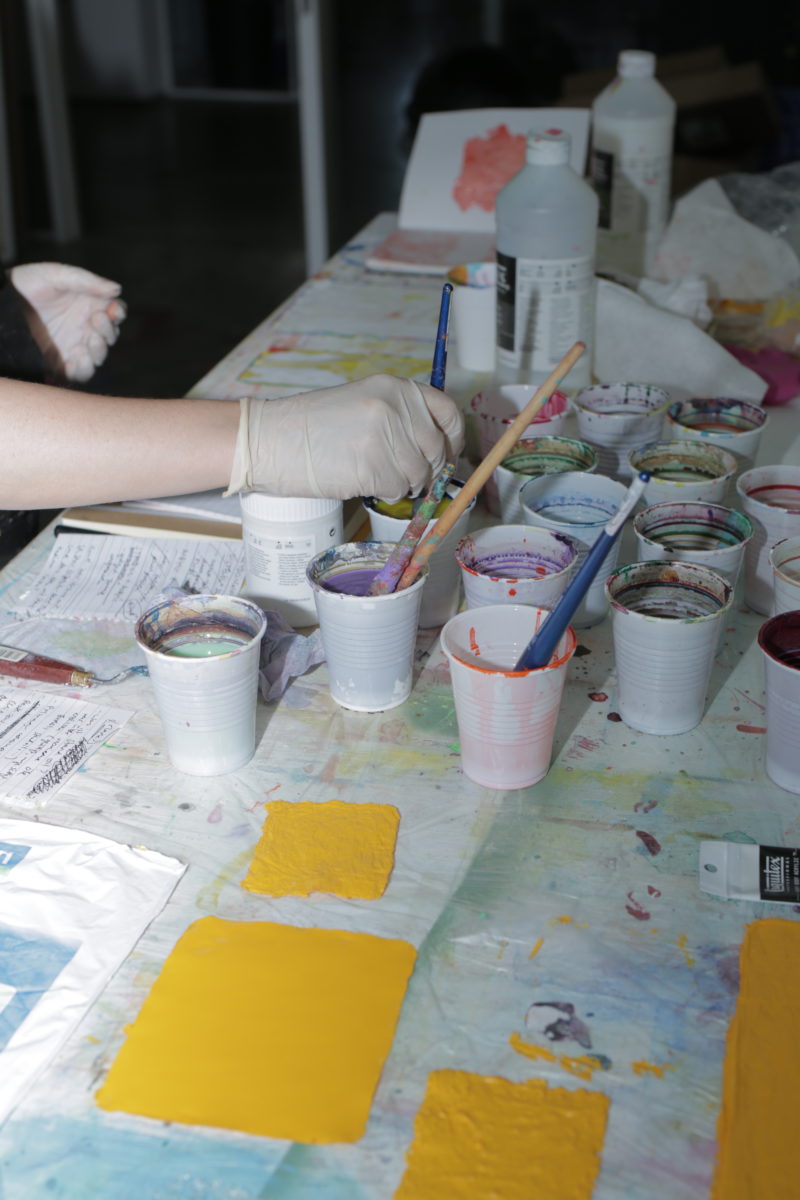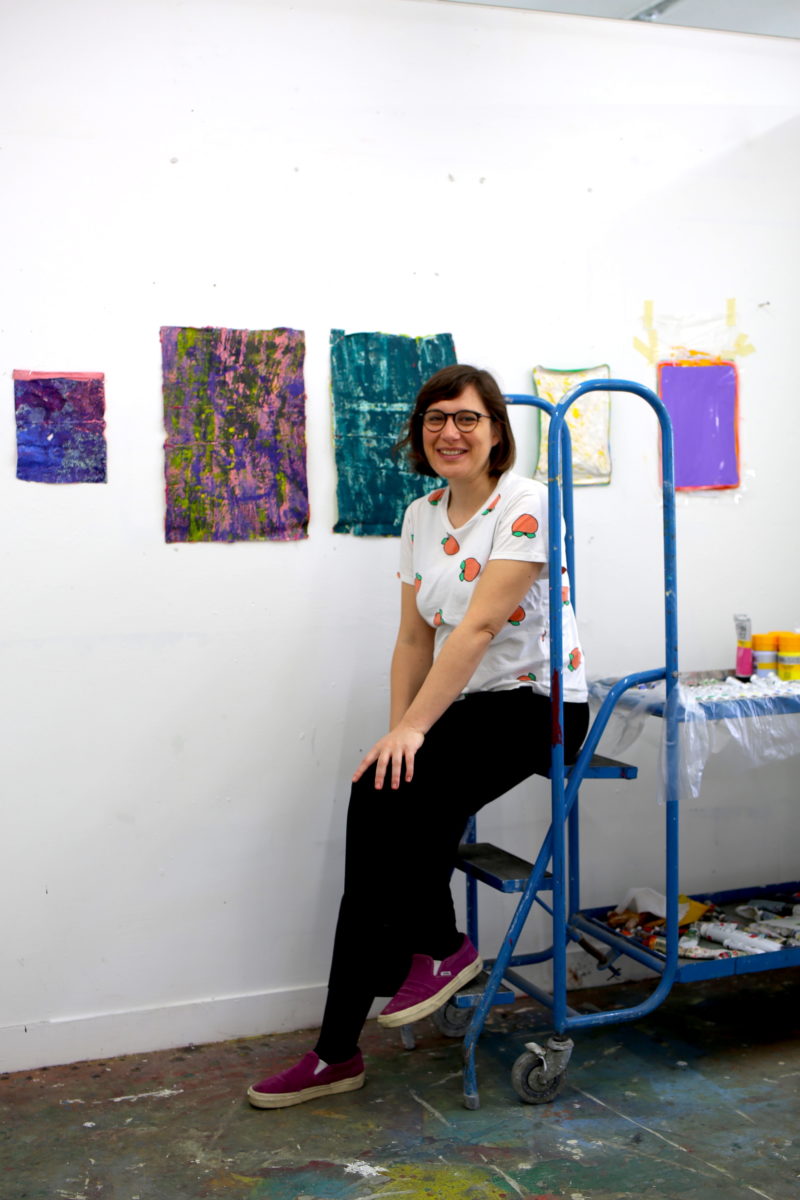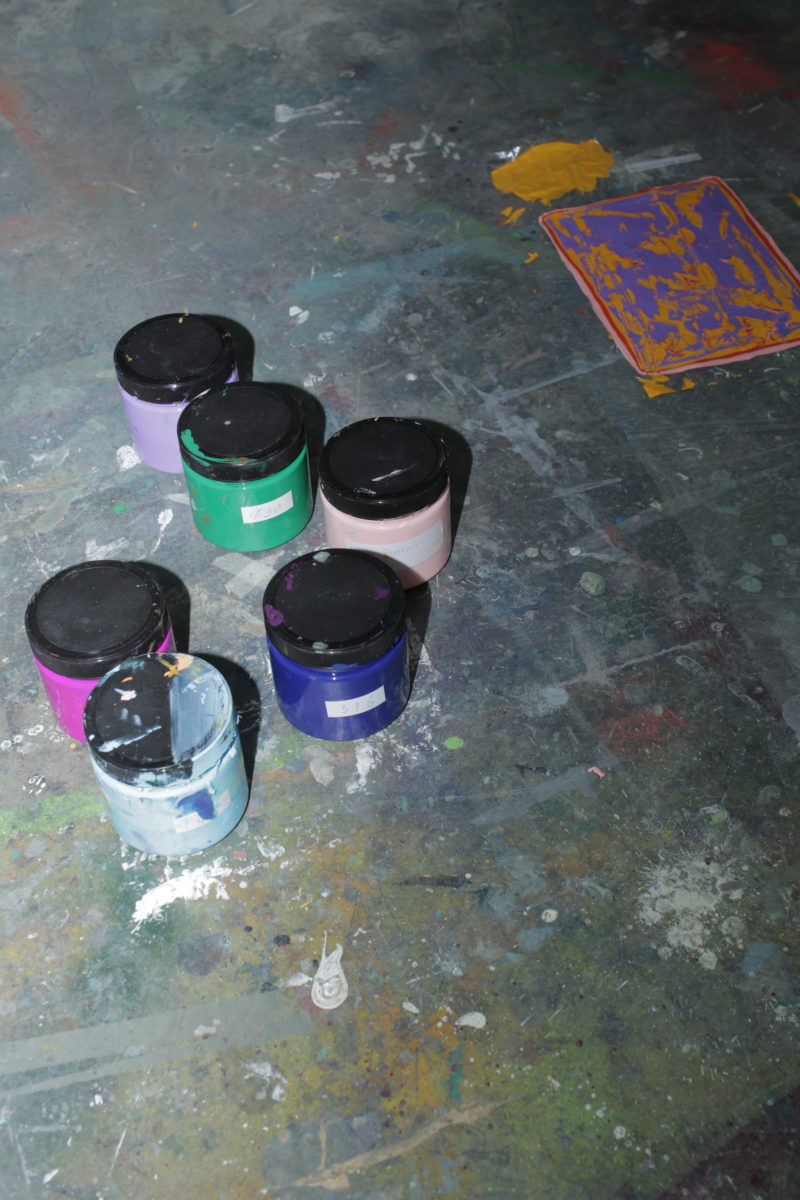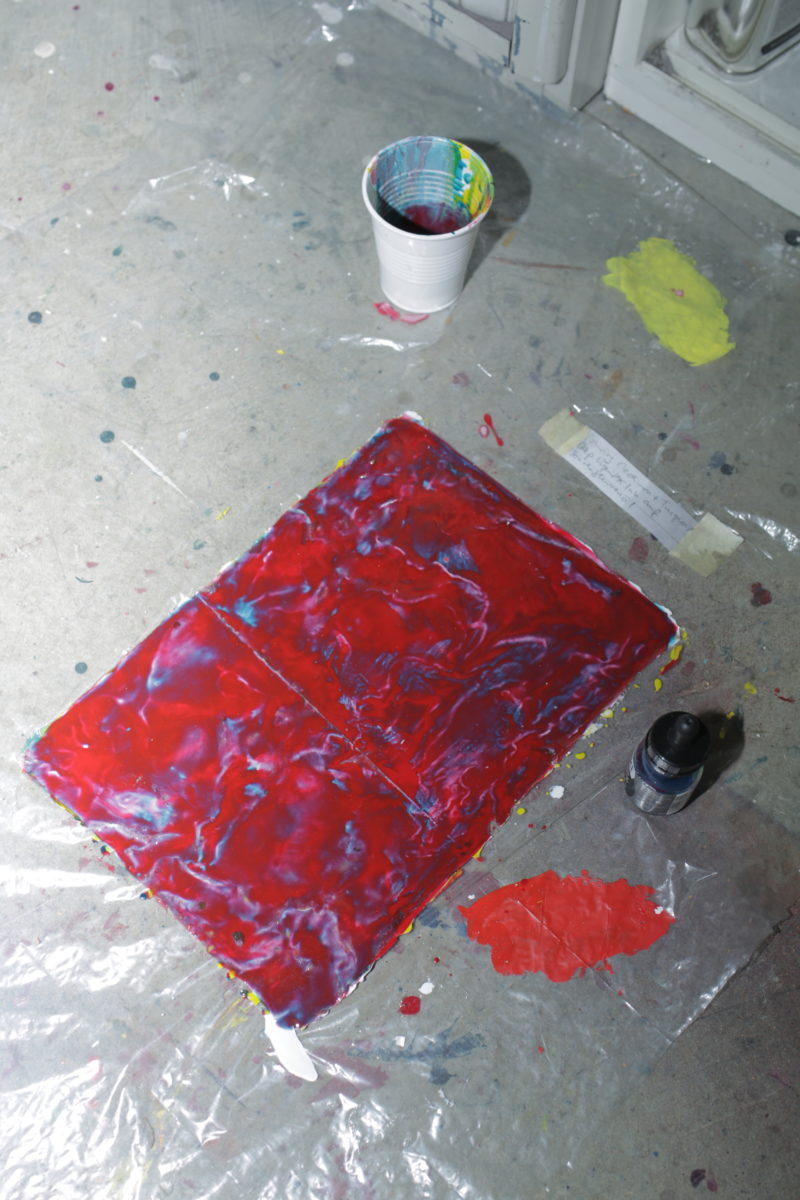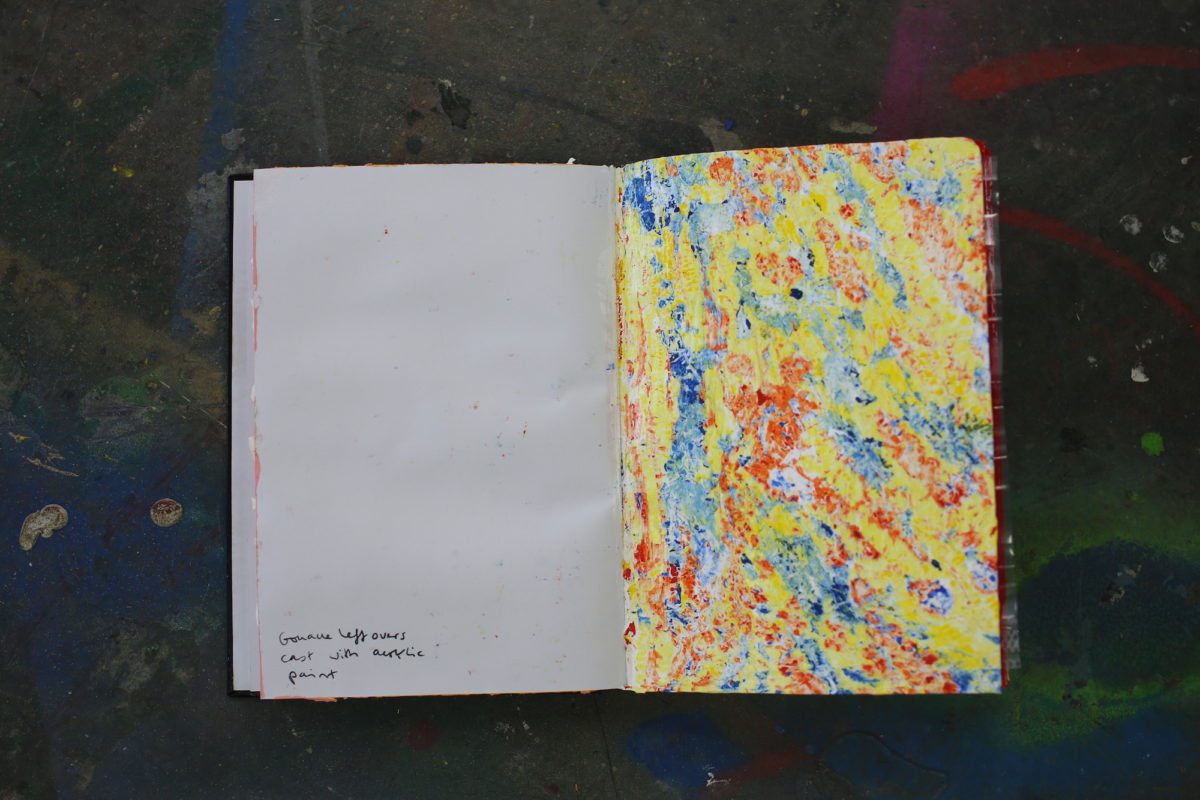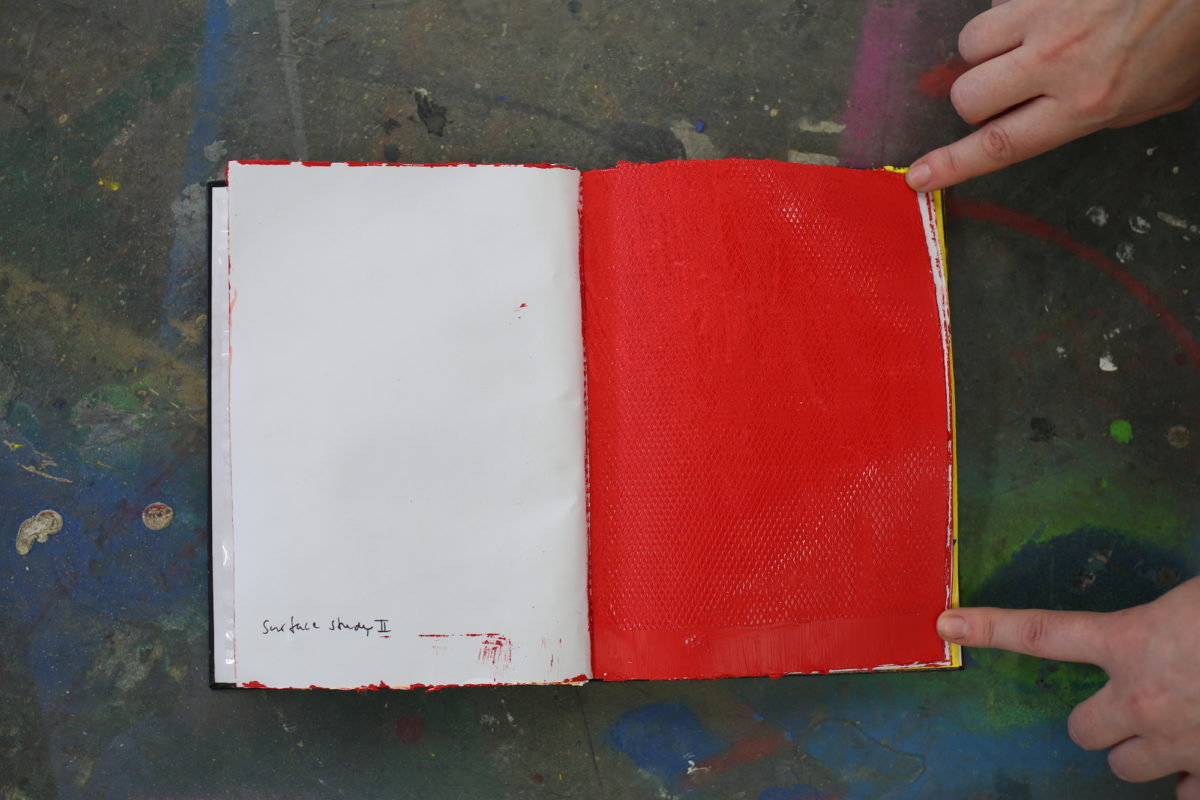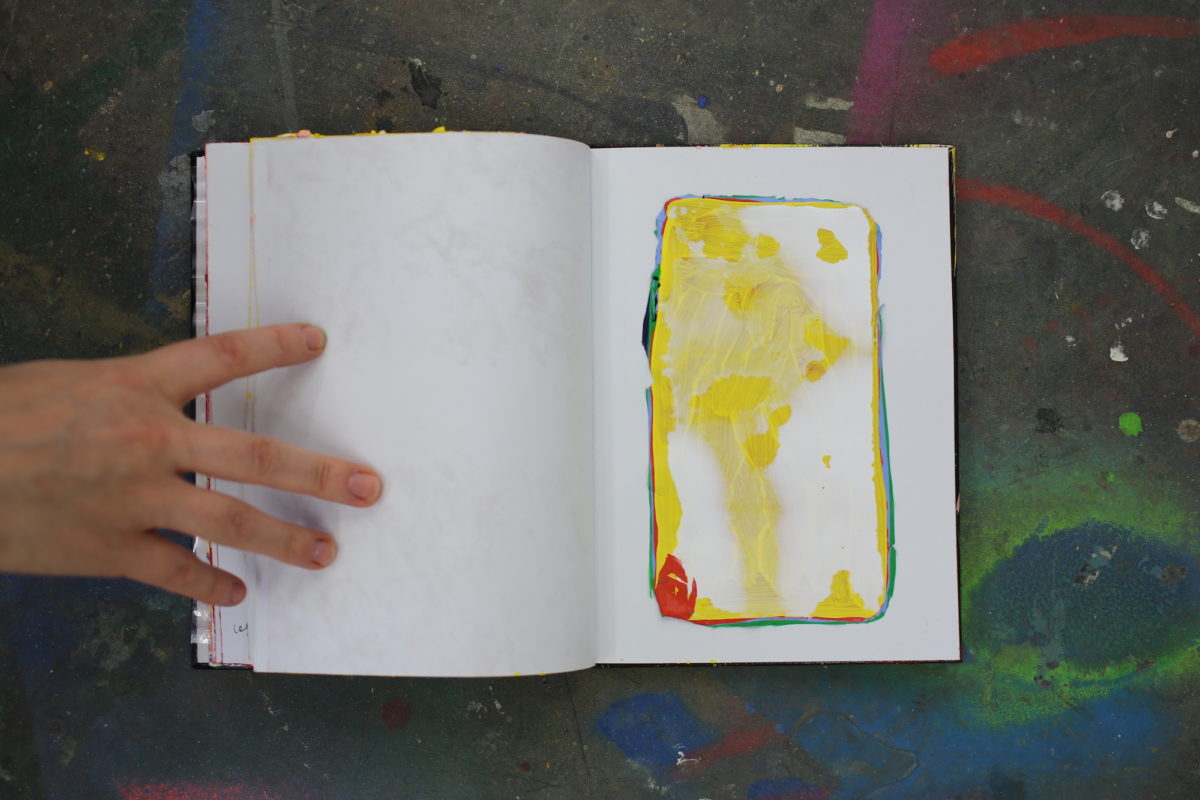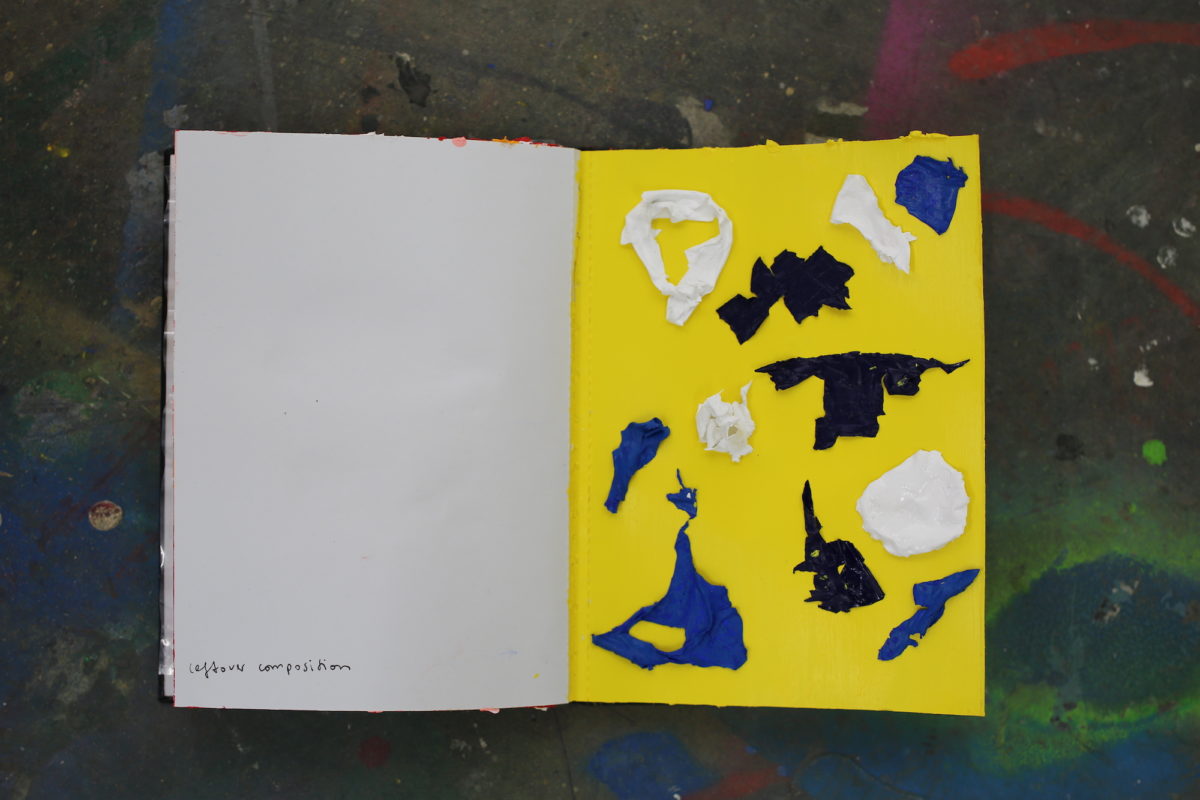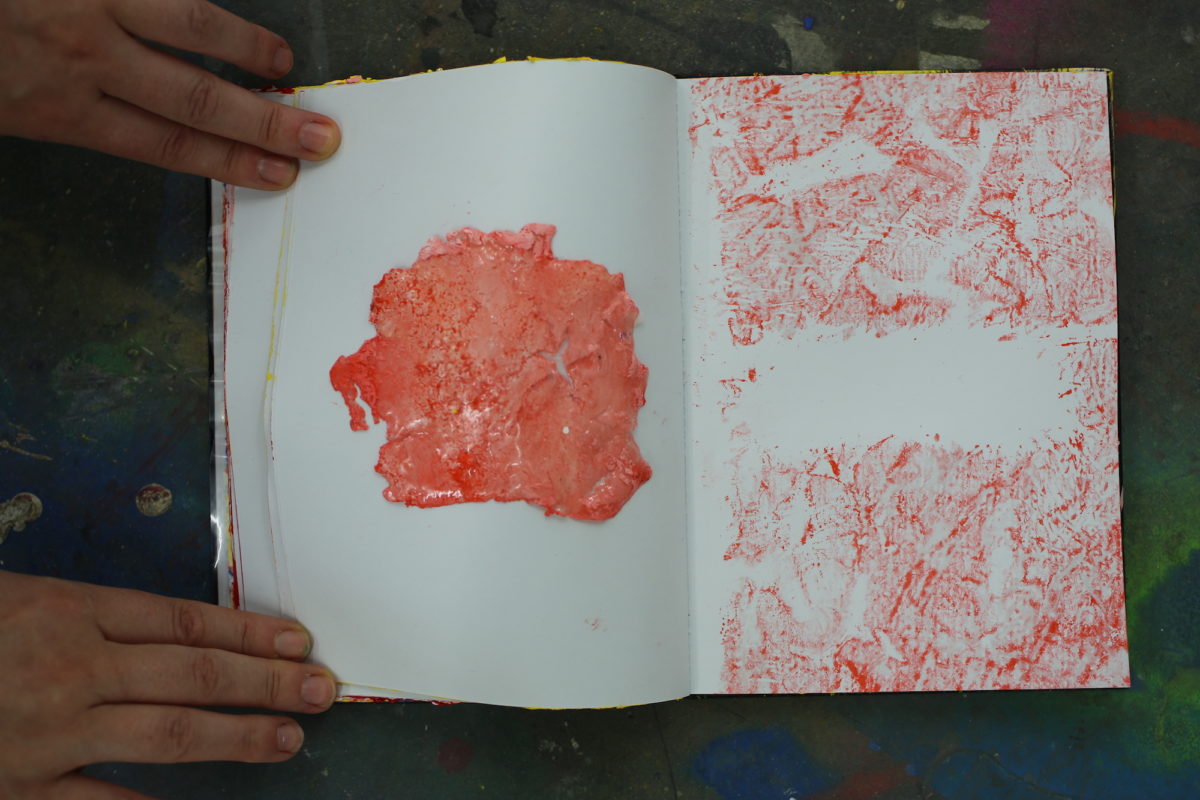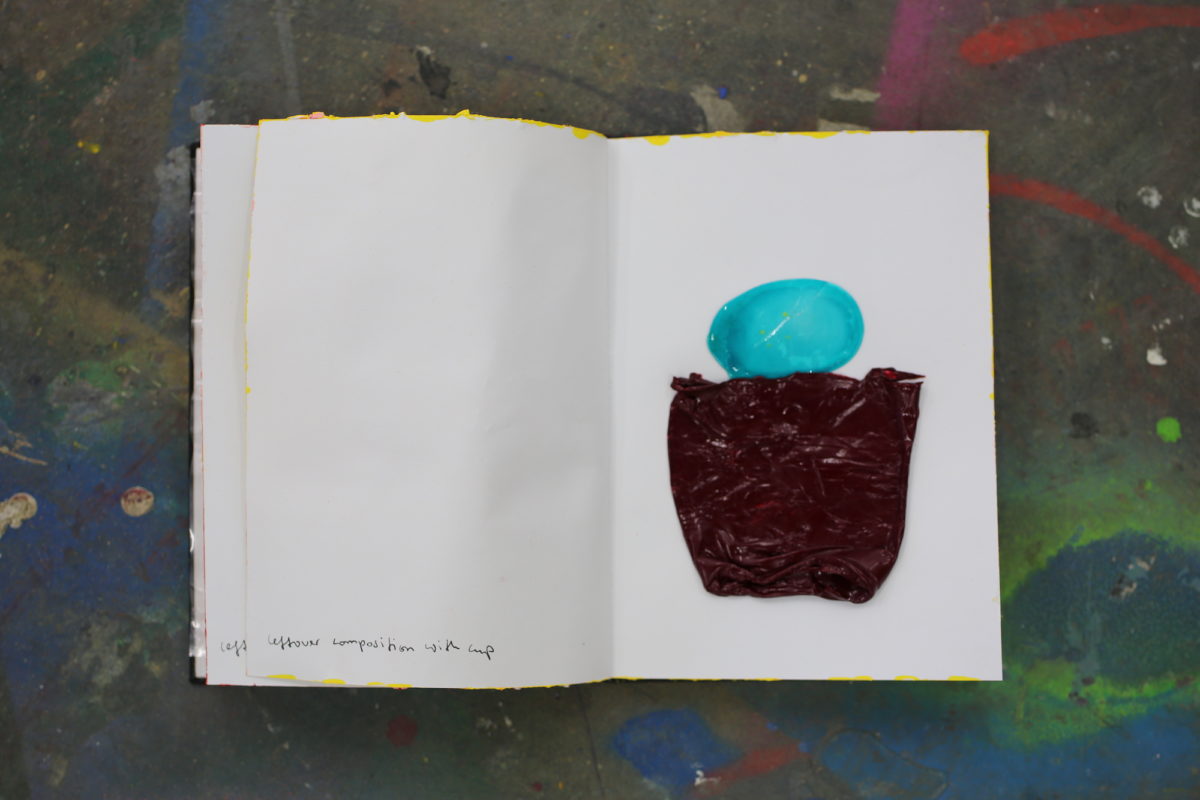
If you think you know painting, Julia Gruner might just push you to think again. Forget brush, easel and canvas; this young German artist gets her hands dirty with the viscous ooze of paint itself. Building up layer upon colourful layer of paint, she works until the surface can be peeled away as an intact, supple skin of sorts. If Gerhard Richter took his squeegee to a plastic bag, this is what it might look like. In the work of Julia Gruner, abstraction meets psychedelia in freewheeling colour combinations and coagulating patterns. Mixing anything from oil paint to cooking vinegar and salt together, this is part chemistry experiment, part artist studio—with a healthy dose of cooking show thrown in for good measure.
Gruner challenges the boundaries of what painting is, with her casts of three-dimensional objects pushing towards sculpture, while constantly resisting definition. Having studied at the renowned Kunstakademie Düsseldorf under the tutorage of Katharina Grosse, and now based in Cologne, Germany, she is part of a new generation of painters who are unafraid to challenge the limitations of their practice. She has made casts from disposable plastic cups, applied painted foil to windows and even fashioned a bright yellow raincoat from acrylic paint. Now, she has come to London to take part in the latest residency at Elephant Lab, where she is free to experiment with as many paint products as an artist could dream of, with full technical support from the laboratory team.
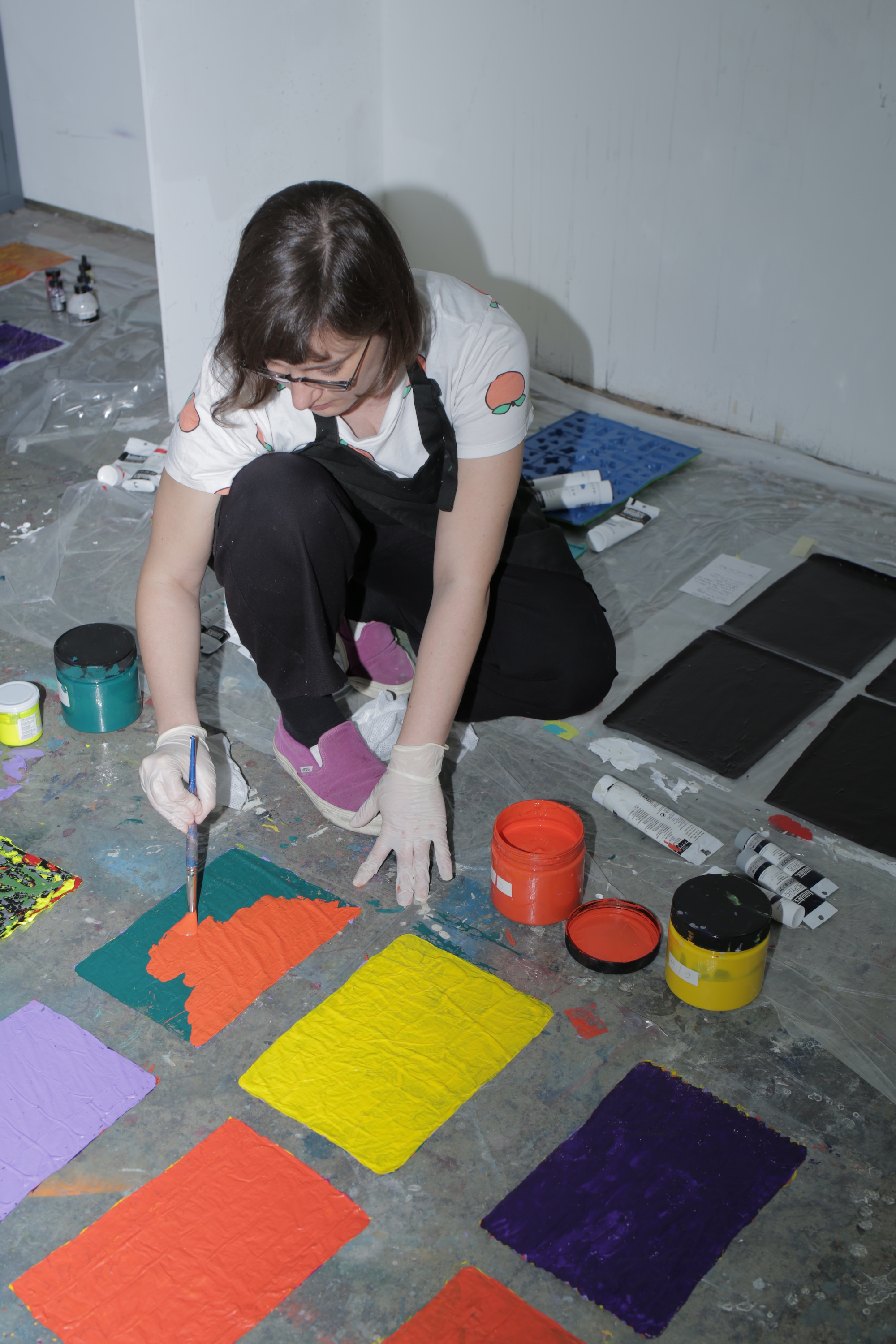
What have you been up to during your residency at Elephant Lab?
I’ve been experimenting with different kinds of paint that repel each other, like Winsor & Newton oil and Liquitex acrylic. One is oil-based and the other is water-based, so if you mix them they create interesting patterns. I tried a lot of different combinations of materials, and tried to create images from them.
How do you choose the colour combinations?
I try to get as much contrast as possible, so you can really see what happened. I want to give an indication of the chemical reactions. The colours themselves are selected quite intuitively, and also just based on what I could find in the studio. I choose maybe seven different colours and then combine them.
“My part in this is choosing the colour, but everything else that happens is left up to chance”
There is an element of chance and randomness in the process of mixing these chemical reactions. How does that influence the final product, and what part do you play in it?
My part in this is choosing the colour, but everything else that happens is left up to chance. Of course, I can make tests to see what ingredients are doing what, but I cannot really influence the image in the end. I like this, actually.
Is there a loss of control?
Yes, right. I can see the first layer and see what happened, and then I choose the next layer according to what happened there. I react to each stage of the process.
There so many layers coming through. How many have you been working with here, and how do you decide when you are finished with a piece?
It’s finished when the whole sheet is covered. Each ingredient needs a different number of layers, because some oils are really repellent so you need many more layers to close it up. Others are already dry after three layers, so then you only have three colours. You need a certain number of layers to peel it all off in the end.
What are the different plastics that you have been applying these layers of paint to?
I tried all different kinds, because whatever the paint dries on kind of gets stuck to the surface of the paint skin. For some, I used silicone so the surface is really matte, and in others I used plastic wrapping foil and that surface is really shiny. I also used trash bags that were already really crumpled, so the pattern is also left behind from that. I tried many different surfaces; it was all part of my experimentation.
How did you first start learning these kind of material processes? What led you towards painting in a more abstract way?
It was a long process. I started out doing figurative painting on canvas, very normal! Then I became much more interested in what was happening on the side; when I mixed my colours, it would build up into a really thick skin until I could actually take it out of my mixing tray. From this, I started experimenting with acrylic paint as a three-dimensional medium, and that’s how I came to those thick paint skins. And then, lots of things just happened by accident. I noticed that you can peel off acrylic paint from plastic, but there are also so many different kinds of plastic. At first I thought plastic is just plastic, and I would just use whatever I could find. After a while, I realized there are really big differences between different kinds of plastic. That’s how I got interested in the different surfaces.
I also took lots of microscopic pictures of dried paint, and I tried at first to get really tiny patterns so I could make interesting pictures with the microscope. I then started to explore all kinds of materials, like ordinary cooking oil, salt and vinegar—just anything I could find. I started that maybe six years ago, but I didn’t really know what to do with it. A few years later I would try something new with it, but not be quite sure. This residency was a really good opportunity to make a clear plan. I mean, it’s not scientific but it has allowed me to experiment with lots of different materials and paints. I could try everything with everything, and just see what works and what doesn’t.
Are you still working with food materials at all, like salt or oil?
I used cooking oil on some of these works, because the lab technician explained to me that cooking oil behaves very differently to the oil mediums that you would use for painting. I also tried some stuff with vinegar, mixing it with oil mediums, so there are some cooking elements in there.
Do you think there is a comparison to be made between the act of painting and the act of cooking?
Cooking and painting have a lot in common because they both have ingredients and you mix them together. They create chemical reactions, and in the end you get a final product from it. I actually make these sort of cooking performances together with a friend, working with food. It’s always connected to painting. We create dishes that people can eat, but you’re not really sure if you should because the colours are weird.
“I started to explore all kinds of materials, like ordinary cooking oil, salt and vinegar—just anything I could find”
You have described your work with paint as three-dimensional. Would you describe these pieces are sculpture or painting, and does the distinction matter?
I don’t like categories at all. I find it hard sometimes to say that something is just this, or that it’s just that. I like that my work is really in middle, and you just can’t say.
What’s next for you?
I think I will keep experimenting with these materials. I’ve recently been putting paint on regular plastic bags, and when I peel off the paint the print on the plastic bag gets stuck on the paint. The image of the plastic bag becomes reversed on it. I’ve also been experimenting with making casts from different surfaces but just with one colour. I’m looking forward to working on that as well.
Photographs by Louise Benson
All artists-in-residence are invited to document their time at the Elephant Lab in a Winsor & Newton sketchbook, filling it with drawings, paint samples, odds-and-ends and other personal reflections. This is Julia Gruner’s.
Residencies at Elephant Lab
Practising artists are invited to make proposals for a one month residency at Elephant Lab
APPLY NOW